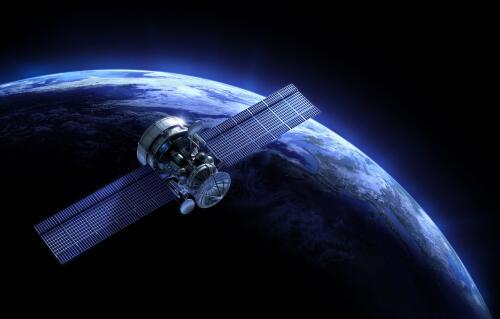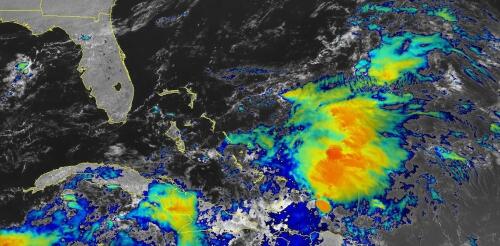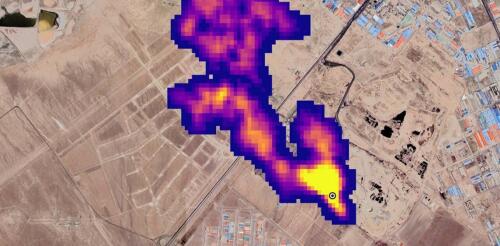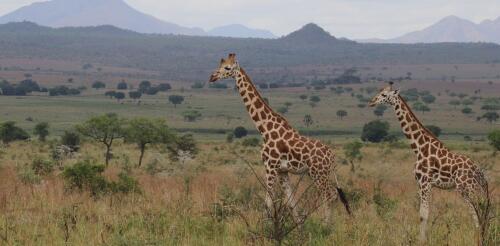Satellites
China’s atmospheric environment monitoring satellite and terrestrial ecosystem carbon monitoring satellite have been officially put into operation, the China National Space Administration (CNSA) said on Thursday. During their in-orbit testing, the satellites demonstrated favorable application results across multiple areas, including ecological environment, forestry and grassland, geographic surveying, meteorology, agriculture and emergency disaster response, according to a CNSA official. The two satellites will provide crucial data to effectively address global climate change and support China’s goals of achieving carbon peak and carbon neutrality. The atmospheric monitoring satellite is the world’s first to utilize active laser detection, employing a combination of active laser, hyperspectral, multispectral and high-precision polarization techniques for comprehensive observation, according to the CNSA. It is capable of conducting extensiv...
When tropical meteorologists peer at satellite images, they often catch sight of subtle cloud formations hinting at something more ominous brewing. The first signs of a potential hurricane can be detected days before a storm gains its fierce momentum. Wispy cirrus clouds radiating outward, the appearance of curved banding low-level clouds and a drop in atmospheric pressure are all clues. These early clues are crucial for predicting the onset of what might develop into a catastrophic hurricane. I am a meteorology professor at Penn State, and my research group uses satellites and computer models to improve forecasting of tropical weather systems. With an especially fierce Atlantic storm season forecast for 2024, being able to detect these initial signals and provide early warnings is more important than ever. Here’s what forecasters look for. Hurricane Harvey entered the Gulf of Mexico as a tropical wave before reorganizing into a tropical storm a...
Methane, a potent greenhouse gas, is being released from landfills and oil and gas operations around the world in far larger amounts than governments realized, recent airborne and satellite surveys show. That’s a problem for the climate as well as human health. It’s also why the U.S. government has been tightening regulations on methane leaks and wasteful venting, most recently from oil and gas wells on public lands. The good news is that many of those leaks can be fixed – if they’re spotted quickly. Riley Duren, a research scientist at the University of Arizona and former NASA engineer and scientist, leads Carbon Mapper, a nonprofit that is planning a constellation of methane-monitoring satellites. Its first satellite, a partnership with NASA’s Jet Propulsion Laboratory and the Earth-imaging company Planet Labs, launches in 2024. Duren explained how new satellites are changing companies’ and governments’ ability to find and stop methan...
Nearly 6,000 years ago, our ancestors climbed arid rocky outcrops in what is now the Nigerian Sahara and carved spectacularly intricate, larger-than-life renditions of giraffes into the exposed sandstone. The remarkably detailed Dabous giraffe rock art petroglyphs are among many ancient petroglyphs featuring giraffes across Africa – a testament to early humans’ fascination with these unique creatures. We are still captivated by giraffes today, but many of these animals are at risk, largely due to habitat loss and illegal hunting. Some are critically endangered. To understand how giraffes are faring across Africa, conservation ecologists like me are studying how they interact with their habitats across vast geographic scales. We use space-age technology and advanced statistical approaches that our ancient ancestors could have scarcely imagined to understand how giraffes can better coexist with people. Giraffes are featured...
If you want to track changes in the Amazon rainforest, see the full expanse of a hurricane or figure out where people need help after a disaster, it’s much easier to do with the view from a satellite orbiting a few hundred miles above Earth. Traditionally, access to satellite data has been limited to researchers and professionals with expertise in remote sensing and image processing. However, the increasing availability of open-access data from government satellites such as Landsat and Sentinel, and free cloud-computing resources such as Amazon Web Services, Google Earth Engine and Microsoft Planetary Computer, have made it possible for just about anyone to gain insight into environmental changes underway. I work with geospatial big data as a professor. Here’s a quick tour of where you can find satellite images, plus some free, fairly simple tools that anyone can use to create time-lapse animations from satellite images. For example, state and urban planners –...




